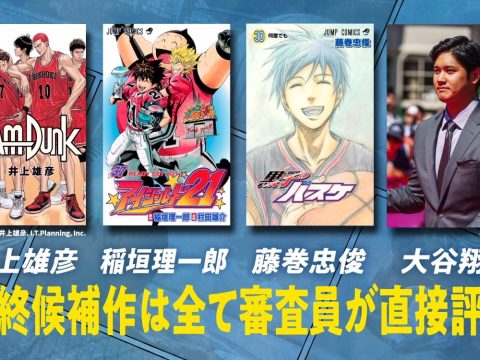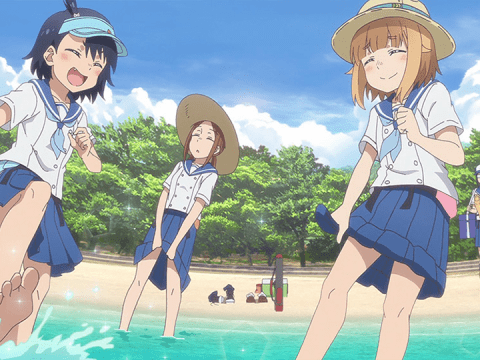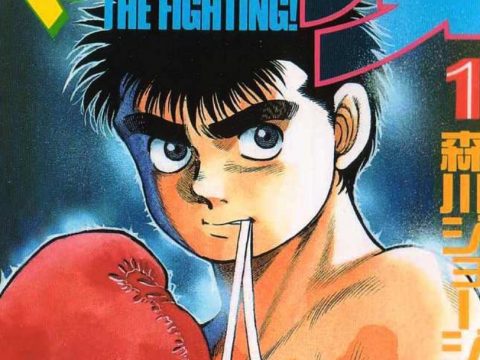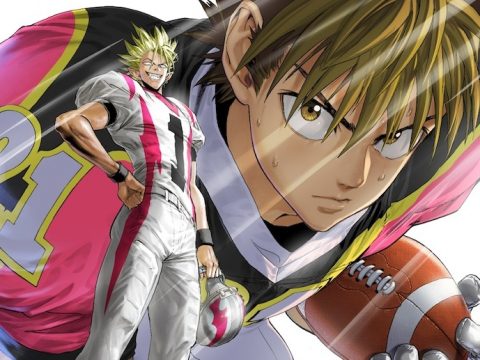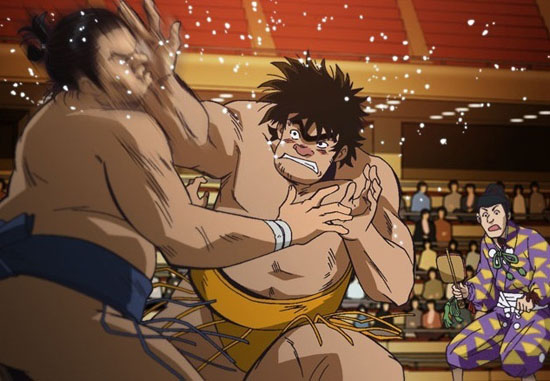
If you pay attention to social media, you may have noticed that people have been talking non-stop about the World Cup for what feels like forever. If you keep up with current anime, you may have noticed that one of last season’s most interesting titles was about ping pong. With those two largely-disparate thoughts inspiring us, we thought it would be worthwhile to spend some time taking a not entirely exhaustive look at some of the more unusual sports anime.
First, a few caveats: Given that you can absolutely drown yourself in baseball, soccer and basketball anime, we’ve chosen to avoid those sports entirely. Furthermore, as much as we’d love to find yet another excuse to mention the wonderful Redline film, we’ll just be talking about titles that skew a bit more towards the real world.
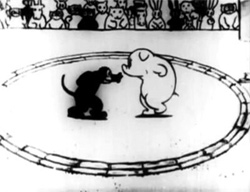
The most common perception of sports anime (or manga) tends to be the typical shounen sports saga, wherein a determined underdog overcomes his own insecurities and shortcomings to eventually become the best. Usually told in long, drawn-out story arcs driven by the need to sell more and more issues of weekly manga magazines, it’s a formula that has existed (and thrived) for decades. While this is the most visible type of sports manga, there’s certainly more than one way to skin a cat and many of the titles we’ll be discussing in this piece actively try and subvert the formula, if not ignore it entirely.
Sumo, kendo and judo are traditional Japanese sports that show up in plenty of anime, but titles specifically about these pastimes seem to be far and few between. One the earliest we could find, dating from way back in 1931, is Doubutsu Sumo Taikai (“Animal Sumo”). While its simple black-and-white animation looks worlds apart from what we’d consider “anime,” and clocks in at a brief 46 seconds, it’s a solid reminder that Japanese animation existed long before Astro Boy. In contrast, the currently-airing sumo TV show, Abarenbou Rikishi!! Matsutarou (“Rowdy Sumo Wrestler Matsutaro!!”), is a bit more modern, although it sports a decidedly retro 1970s-style.
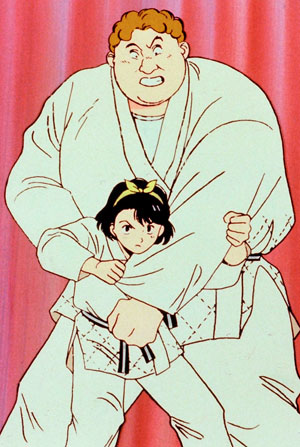
Dedicated kendo anime seems to be even more uncommon, despite seemingly every anime with a high school setting featuring a kendo club. Bamboo Blade, released in 2007, focuses on a high school women’s kendo club, because what could be more moé than getting hit with a wooden stick?
The classic Judo anime Yawara! A Fashionable Judo Girl began as a popular manga in the 1980s by Naoki Urasawa (of 20th Century Boys and Monster fame) and led to a similarly popular TV anime series that ran from 1989 to 1992. Yawara! Is also a bit of an oddity for American fans, as it was one of the last anime titles licensed and released by AnimEigo, although they were unable to release all 124 episodes.
Continuing with the martial arts schtick, one of the most famous sports anime may be Ashita no Joe (“Tomorrow’s Joe”), about aspiring boxer Joe Yabuki. Starting as a manga in 1968, Ashita no Joe was turned into a TV show in 1971, directed by the legendary Osamu Dezaki and produced by Osamu Tezuka’s doomed animation studio, Mushi Production. A couple of movies and another TV show followed through the 1970s and 80s, eventually turning Ashita no Joe into something of an anime icon. More recently, George Morikawa’s boxing manga Hajime no Ippo (“The First Step”) began in 1989, is still going, and has been adapted into no less than three TV shows with over 100 combined episodes.
Changing gears for a moment, we’d be remiss not to mention a few motorsports titles as well. While the seminal Initial D may be the first anime to spring to mind when someone says “racing,” Initial D’s creator Shuichi Shigeno first garnered some attention with his motorcycle racing manga Baribari Densetsu (“Baribari Legend”), which earned him the Kodansha Manga Award in 1985 and was adapted into a couple of OVA episodes in 1986. If you’re curious, “baribari” is an onomatopoeia for tearing, crunching, or working hard. Futari Daka (“Twin Hawks”) was another motorcycle racing manga from the 1980s, focusing on a couple of rivals with the surnames “Hawk” and “Falcon.” The 1984 TV anime adaption of Futari Daka may be most notable for featuring having noted composer Joe Hisaishi on staff, best known for his work with directors Hayao Miyazaki and Takeshi Kitano.
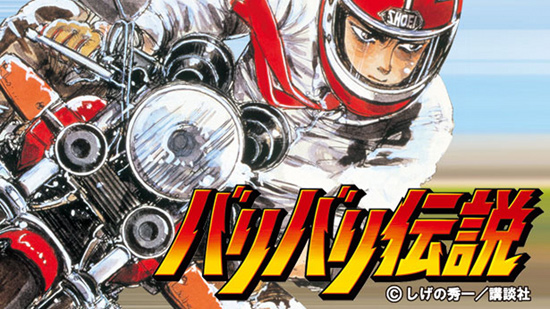
Is professional wrestling a sport? While wrestling as it appears in anime tends to fall into the “professional wrestling” vein rather than the Greco-Roman type (the bizarre crossover between pro-wrestling fans and anime fans being worthy of another article altogether), it’s close enough to count here. Most recently, the Production I.G. short directed by Masaaki Yuasa (who also directed this year’s Ping Pong), Kick-Heart, will live on in the history books as the first crowd-funded anime. In the 1980s, the design studio ARTMIC (best known for Bubblegum Crisis and Genesis Climber MOSPEADA) broke with their habit of animating transforming motorcycles to focus on a couple of women pro-wrestlers in the 1986 OVA one-shot, Wanna-Be’s. Although the influence of pro-wrestling’s women wrestlers showed up even earlier, in the sci-fi novel series Dirty Pair, written by Yoshikazu Yasuhiko. Inspired by a wrestling duo called the Beauty Pair, Yasuhiko created a couple of women protagonists who would dominate much of 1980s anime fandom thanks to a successful anime franchise that included a TV show, film, and a couple of OVAs.
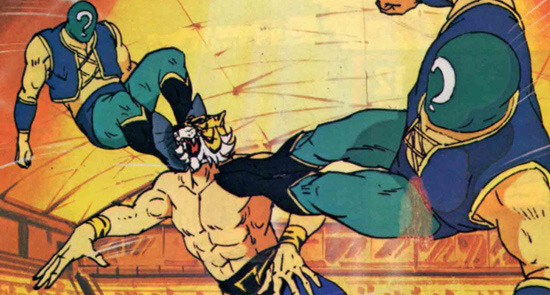
The most famous pro-wrestling anime predates both of these titles, with origins going all the way back to 1968. Tiger Mask, about a professional wrestler who wears – big surprise here – a tiger mask, began as a manga by Ikki Kajiwara and Naoki Tsuji. It ran for 14 volumes from 1968 to 1971, and was popular enough to spawn an animated TV show in 1969, 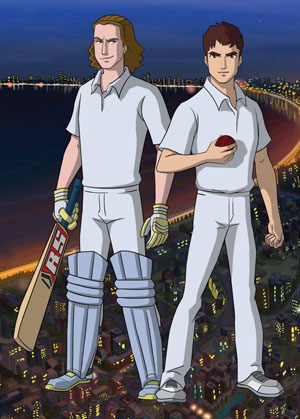 an anime film the year after and yet another TV series in the 1980s. Tiger Mask also has the rare distinction of being an anime character who crossed over to the real world, when a Japanese wrestling organization licensed the character for use as an actual real-life wrestler in the 1980s.
an anime film the year after and yet another TV series in the 1980s. Tiger Mask also has the rare distinction of being an anime character who crossed over to the real world, when a Japanese wrestling organization licensed the character for use as an actual real-life wrestler in the 1980s.
If you’re one of those people who incorrectly refers to baseball as “the most boring sport,” then you’ve probably never heard of cricket. Cricket is kind of like baseball, but with a dash of British colonialism, rules that are nearly impossible to understand and games that can go on for, literally, days. It’s also insanely popular in India, where the classic baseball manga, Kyojin no Hoshi (“Star of the Giants”), was adapted for an Indian audience and modified to focus on cricket rather than America’s national pastime. 2012’s Suraj the Rising Star was an Indian/Japanese co-production, with TMS Entertainment (of Detective Conan and Anpanman fame) handling much of the preproduction work.
Fans who remember one of Gainax’s earliest works, Aim for the Top! Gunbuster, may be surprised to learn that the OVA’s title is inspired not by a classic giant robot series, but by a tennis manga called Ace o Nerae! (“Aim for the Ace!”). A shoujo sports manga by Sumiko Yamamoto that started in 1973 and ran until 1980, Ace o Nerae! followed the efforts of high school tennis player Hiromi Oka to improve her abilities. Multiple TV series, OVAs and films followed throughout the 1970s and 1980s, many of which were directed by the previously mentioned Osamu Dezaki. 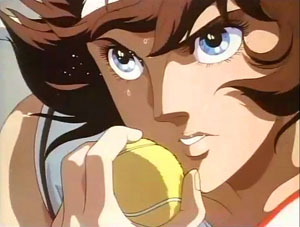 More recently, Prince of Tennis was a manga/anime franchise that enjoyed considerable popularity throughout the 2000s. While popularity for the series has waned, its most meaningful contribution to anime history may be a positively bonkers English-language fandub of the first episode recorded by a fan who handles voice acting duties for every single character.
More recently, Prince of Tennis was a manga/anime franchise that enjoyed considerable popularity throughout the 2000s. While popularity for the series has waned, its most meaningful contribution to anime history may be a positively bonkers English-language fandub of the first episode recorded by a fan who handles voice acting duties for every single character.
We’d be remiss if we didn’t close out by mentioning some recent titles that are distinctly “unusual” but don’t quite fit in the above categories. Kyoto Animation’s recent series Free! reminded us that female fans exist, too, with a TV show about a high school swim team. Eyeshield 21, written by Riichiro Inagaki (who we interviewed earlier this year) and illustrated by Yusuke Murata, focuses on a high school American football team, and enjoyed considerable success despite the sport being largely unknown in Japan. Lastly, Gainax’s ungainly-titled Stella Women’s Academy, High School Division Class C³ was about an all-female competitive airsoft team.
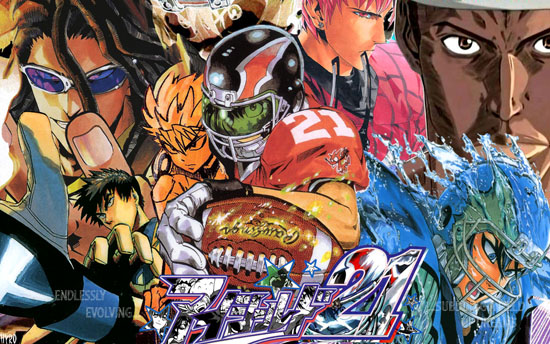
We’ve really only scratched the surface of some of the weirder sports anime that’s out there, but hopefully we’ve encouraged you to look beyond the staples of baseball and soccer. The bottom line is that while baseball and soccer anime may dominate the sports genre, there’s plenty of variety to be found with a little digging.
Related Stories:
– Riichiro Inagaki Interview: A chat with the author of Eyeshield 21
– For Love of the Game: A Baseball Anime Primer
– Tough: Where MMA = Manly Manga Antics
– Ping Pong: Nothin’ But Love
– Baseball Anime Grand Slam


